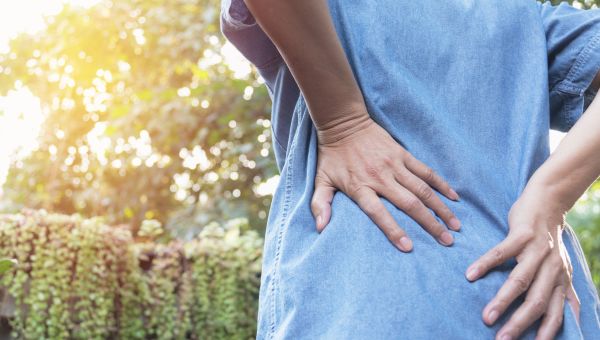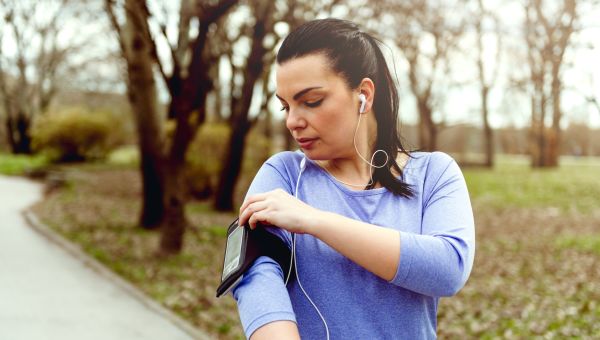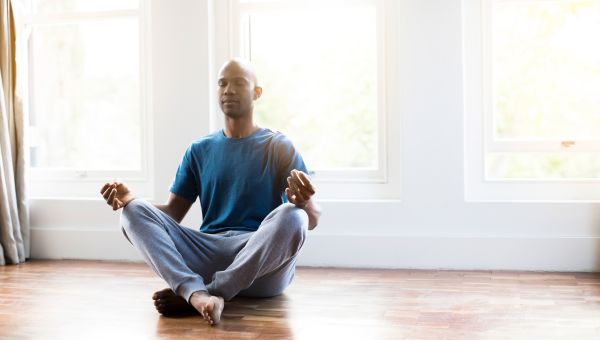1 in 5 adults has chronic pain—here's how you can get relief naturally
Learn ways to ease pain with the use of medication.
Updated on December 14, 2022

Pain is your body’s way of telling you that something’s wrong. Acute pain begins suddenly and catches your attention immediately, letting you know that you’ve been hurt. Chronic pain, on the other hand, is long-term pain that lasts more than 12 weeks. It can feel like anything from a dull ache to a burning or stinging sensation, and often comes from an injury, like nerve root compression from a herniated disc, or from health conditions like osteoarthritis and fibromyalgia.
Chronic pain can be debilitating. According to a November 2020 report by the Centers for Disease Control and Prevention (CDC), it affects one in five adults in the United States, or more than 52 million Americans. More than 19 million adults (7.4 percent) experience high-impact pain that frequently limits the ability to perform daily tasks, like grocery shopping and getting to work. Anyone can experience lasting discomfort, but older adults, women, people in rural areas, and adults living in poverty are at a higher risk.
This pain is often treated with medications, like opioids, which are highly addictive drugs that have led to an epidemic of abuse and overdoses. According to the CDC, more than 16,000 people died from overdosing on prescription opioids in 2020 alone.
That's one of the reasons you may want to try to reduce chronic pain naturally. Even though you may not get ease it completely, you can lessen its effects. “Physicians and patients should be having discussions not about the elimination of pain, but rather improving pain to improve a functional goal in their life,” says Scott Joy, MD, an internist in Englewood, Colorado.

Maintain a healthy weight
A 2019 systematic review published in the British Journal of Anaesthesia reported that obesity, defined as having a body mass index over 30, is an independent predictor of chronic pain. The review looked at multiple studies and found that obesity contributed to chronic pain via more stress on joints, lower physical activity levels, and overall body deconditioning.
Maintaining a healthy weight through diet and exercise can help reduce joint stress. And if you're overweight or obese, even small reductions to your waistline can lessen joint pain. “For every pound of weight loss, that's four pounds less weight on your joints,” says Dr. Joy.

Say "yes" to exercise
Physical therapy is designed to improve mobility and alleviate chronic pain. As part of or in addition to that therapy, a range of exercises like yoga, tai chi, swimming, or weight training can help.
Yoga’s mix of focused breathing, meditation, and movement has been found to be effective in reducing aches and soreness. In a 2017 systematic review published in Annals of Internal Medicine, people who practiced yoga felt pain less intensely and functioned better than those who received usual care or education.
It's not just yoga—other types of exercise may help, too. One November 2020 review in Advances in Therapy found that tai chi could be helpful in treating chronic low back pain, as well as pain related to multiple sclerosis and post-traumatic stress disorder.
Speak with your healthcare provider or physical therapist before beginning any exercise regimen. They can start you slowly, help you tailor your workouts to your specific needs and capabilities, and modify moves as you go along.

Practice mindfulness meditation
"Anything that can improve your mood is going to have the potential to reduce chronic pain,” says Joy. Mindfulness meditation, which trains your brain to focus on the present moment and your breath, is one way. A 2021 review in the International Journal of Clinical and Health Psychology found that mindfulness-based interventions were helpful in the treatment of pain in patients with fibromyalgia, low back pain, headaches or migraines, and non-specific chronic pain.
To try mindfulness meditation, grab a chair or sit cross-legged on the floor, and focus on the in-and-out flow of your breath at one spot, such as at your nostrils or your belly. If you’re not sure mindfulness meditation is right for you, try a different method of meditation.

Try talking to a therapist
Seeing a mental health professional can help you deal emotionally with chronic pain and may even help alleviate it. One way is by addressing depression. Pain and depression have a two-way relationship.
“Depression often presents as physical pain, and a lot of people don't recognize that,” says Joy. But it can also work the other way. For example, someone in constant physical pain might isolate themselves socially, which can make them depressed.
A multi-disciplinary approach that includes therapy may be helpful for someone with chronic pain. In a 2018 study of 115 people with chronic pain published in the International Journal of Behavioral Medicine, people who received cognitive behavioral therapy (CBT) had less depression and anxiety than people who did not receive CBT. What’s more, many participants maintained those improvements in a follow-up three years later. CBT is often used to help change thought patterns and alter the way a patient’s brain perceives pain—and it’s increasingly being used as a safe alternative to opioids.
A January 2022 study published in the Annals of Internal Medicine looked at the effectiveness of CBT on chronic pain in long-term opioid users. The study included 850 patients who received weekly interventions for three months, with a 12-month follow up after treatment. While opioid usage did not decrease in either group, patients who had CBT noted less pain than those who didn’t get CBT, and the effects were sustained through 12 months.

Stop smoking
The same nicotine that triggers the feel-good dopamine in your brain might also be causing you pain. Smoking has been linked to several kinds of chronic pain, including back pain. It can reduce blood flow to your bones and tissues, which may cause problems, especially in the discs in your spine. Since that area already has reduced blood flow, this can lead to lower back pain.
Throwing out your cigarettes could help. “Stopping smoking can reduce your risk of developing narrowing of the arteries in your arms and legs, known as peripheral vascular disease, which can be a cause of chronic pain,” says Joy.

Treede RD, Rief W, et al. Chronic pain as a symptom or a disease. PAIN. 2019;160(1):19-27.
U.S. Census Bureau. U.S. Census Bureau QuickFacts: United States. Published 2021.
Centers for Disease Control and Prevention. NCHS Data Brief: Chronic Pain and High-impact Chronic Pain Among U.S. Adults, 2019. November 2020.
Zelaya C, Dahlhamer J, et al. Key Findings Data from the National Health Interview Survey. 2020.
Mills SEE, Nicolson KP, Smith BH. Chronic pain: a review of its epidemiology and associated factors in population-based studies. British journal of anaesthesia. 2019;123(2):e273-e283.
Arthritis Foundation. Weight Loss Benefits for Arthritis. Accessed December 12, 2022.
Chou R, Deyo R, et al. Nonpharmacologic Therapies for Low Back Pain: A Systematic Review for an American College of Physicians Clinical Practice Guideline. Annals of Internal Medicine. 2017;166(7):493.
Urits I, Schwartz RH, et al. A Comprehensive Review of Alternative Therapies for the Management of Chronic Pain Patients: Acupuncture, Tai Chi, Osteopathic Manipulative Medicine, and Chiropractic Care. Advances in Therapy. 2020;38(1):76-89.
Pardos-Gascón EM, Narambuena L, et al. Differential efficacy between cognitive-behavioral therapy and mindfulness-based therapies for chronic pain: Systematic review. Int J Clin Health Psychol. 2021;21(1):100197.
DeBar L, Mayhew M, et al. A Primary Care–Based Cognitive Behavioral Therapy Intervention for Long-Term Opioid Users With Chronic Pain. Annals of Internal Medicine. Published online November 2, 2021.
Ólason M, Andrason RH, et al Cognitive Behavioral Therapy for Depression and Anxiety in an Interdisciplinary Rehabilitation Program for Chronic Pain: a Randomized Controlled Trial with a 3-Year Follow-up. Int J Behav Med. 2018 Feb;25(1):55-66.
Khan J, Hah J; Mackey Sean CB. Effects of smoking on patients with chronic pain: a propensity-weighted analysis on the Collaborative Health Outcomes Information Registry. Pain. 2019. 160;10:2374-2379.
Cleveland Clinic. Why Smoking Will Worsen Your Chronic Pain. March 15, 2021.
Wang W, Zhao T, et al. Smoking and the Pathophysiology of Peripheral Artery Disease. Front Cardiovasc Med. 2021 Aug 27;8:704106.
Westchester Medical Center. Peripheral Vascular Disease. Accessed December 14, 2022.
More On


video

article

slideshow


video


video
